Gratitude still strong for Weifang villagers' support for foreigners held by Japanese invaders
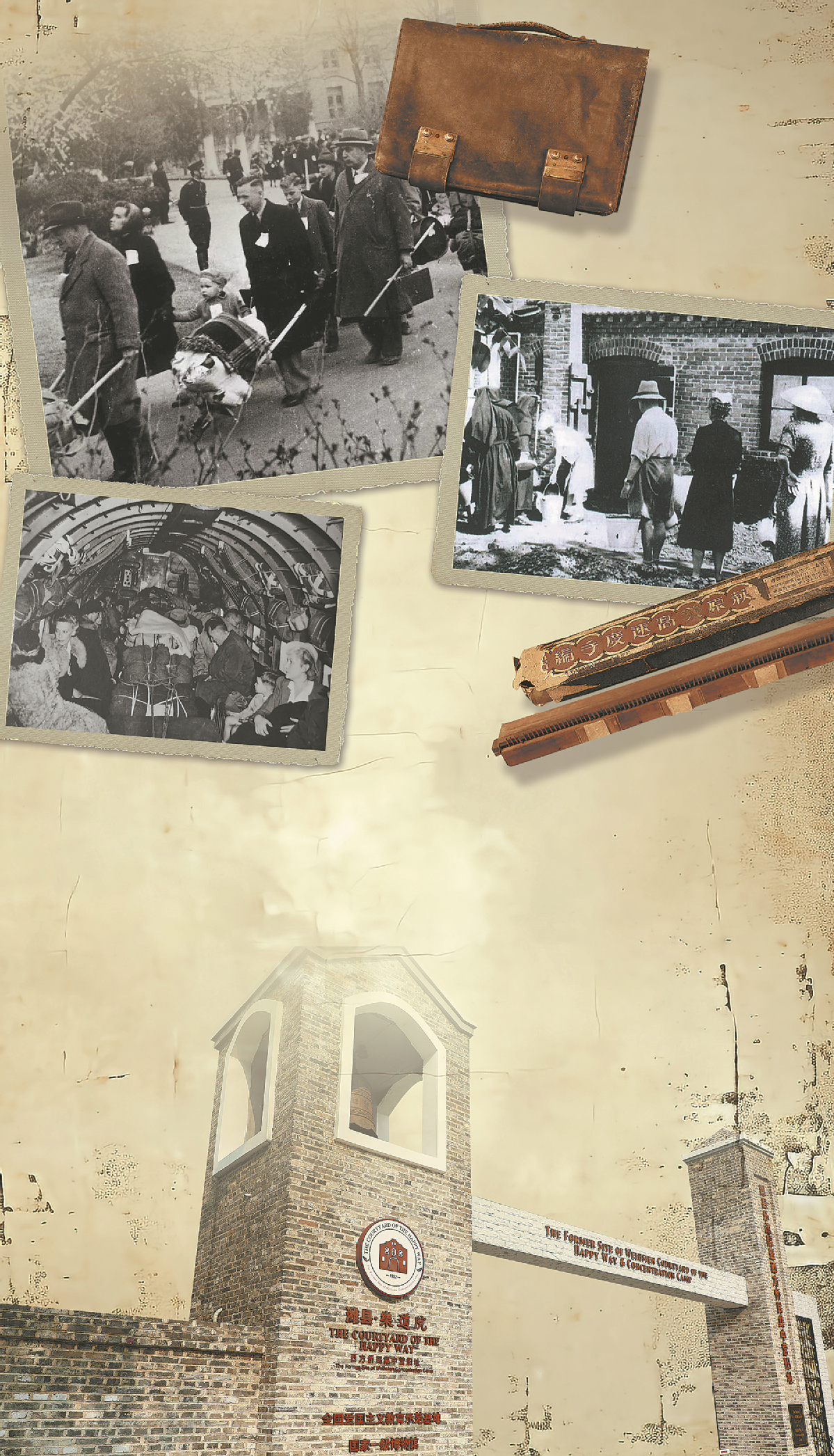
In a 140-year-old cross-shaped building in Weifang, Shandong province, two walls display nearly 50 golden handprints, each inscribed with an English name, and some also having a Chinese name.
Most of the handprints are those of people from Europe and North America. Some of them spent more than two years in what was the largest civilian internment camp established by Japanese invasion forces in the Far East during the Chinese People's War of Resistance against Japanese Aggression (1931-45) and World War II, an experience that profoundly changed their lives.
Although they now live in different parts of the world, they have left their names and handprints in China forever.
Today, the camp site has been developed into a large hospital, a school and a museum detailing the camp's history
In the 1940s, a missionary compound was converted into the internment camp. During the final two years of World War II, over 2,000 Western civilians from 25 countries in Europe and North America endured difficult times in the camp.
READ MORE: Exhibits relive horrors of Japanese torture at WWII camp
Throughout this time, villagers who lived near the camp risked their lives to secretly deliver food, medicine and crucial intelligence to the civilians, aiding some escape efforts. In 1945, with the help of the local Chinese, these expatriates were successfully liberated by the United States military.
Today, the camp site has been developed into a large hospital, a school and a museum detailing the camp's history.
The camp was originally a mission compound founded by US missionaries in 1882, which served as a church, hospital and school in Weihsien, the former name for Weifang.
In 1943, the Japanese invaders turned it into an internment camp to detain over 2,000 Western civilians, including more than 300 children, who had been living in Beijing, Tianjin, Shandong and other places. The oldest was over 85, while some infants were born in the camp.
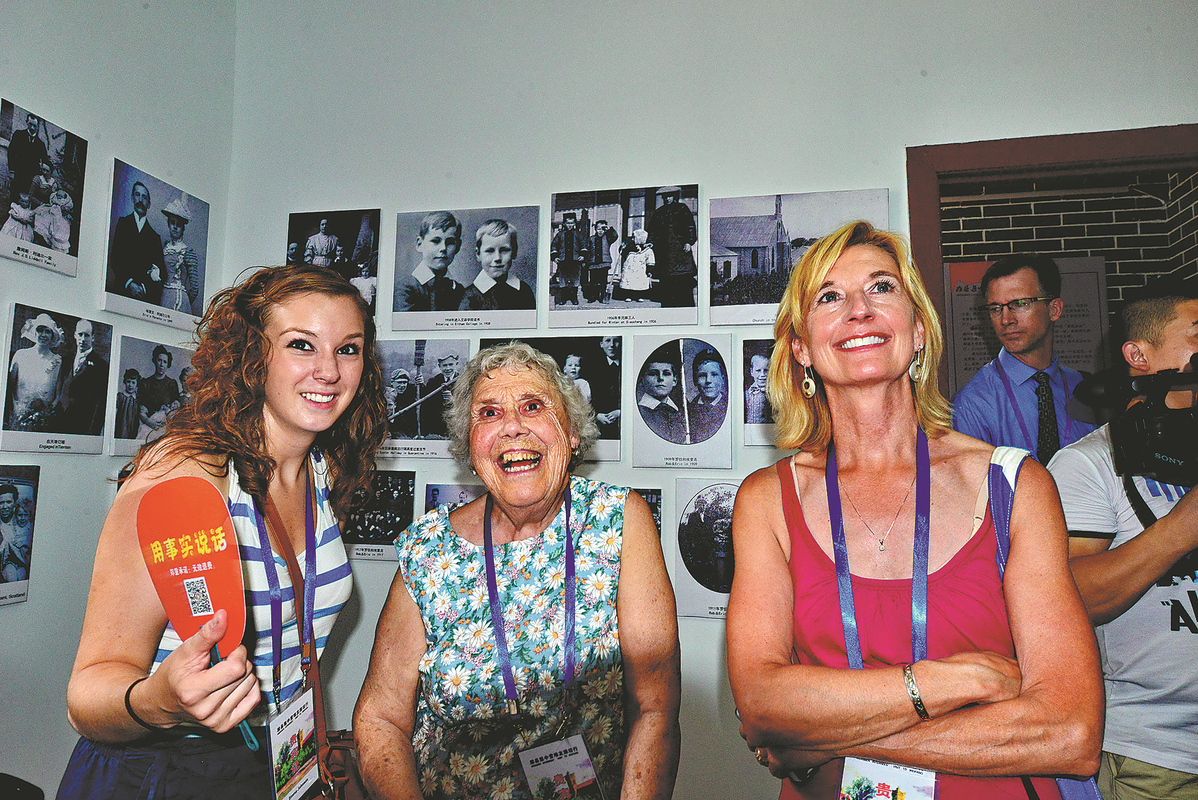
Among the detained civilians were notable figures such as Briton Eric Liddell, the 1924 Paris Olympics 400m track champion, and Arthur W. Hummel Jr, who later became the second US ambassador to China.
The camp was surrounded by barbed wire, high walls, watchtowers, and searchlights, with the foreign nationals stripped of their freedom and subjected to forced labor.
It must have been difficult for all internees to appear at the frequent roll calls by the Japanese guards. Everyone had to give their number in Japanese when it was called, and they always had to bow to the Japanese as well.
Angela Cox Elliott, A survivor of the internment camp
Charles A. Stanley, from the US and now aged 83, was sent to the camp with his parents when he was only 10 months old. His memories of staying there come from his parents' recollections and public records. "Everyone in the camp had to work for the camp to run," he said. "My father was given a job as a baker and had to get up at 4 am every morning to help bake bread for everyone in the camp."
READ MORE: The conflict that changed China
Stanley's father jokingly referred to his son as "seventh-generation Chinese" as his father's family had lived in China for four generations since the 1860s and his mother's family for three generations since the 1910s. Both Stanley and his parents were born in China.
Conditions in the internment camp were extremely harsh, with families crammed into small student dormitories and individual internees living in crowded classrooms, offering no privacy.
Due to poor nutrition and medical care, as well as abuse from Japanese guards, at least 31 internees died during their imprisonment, although 33 babies were also born.
Eighty-year-old Angela Cox Elliott, who holds both British and Canadian passports, was born in the camp. "It must have been difficult for all internees to appear at the frequent roll calls by the Japanese guards. Everyone had to give their number in Japanese when it was called, and they always had to bow to the Japanese as well," she said, recalling her mother's description of events at the camp.
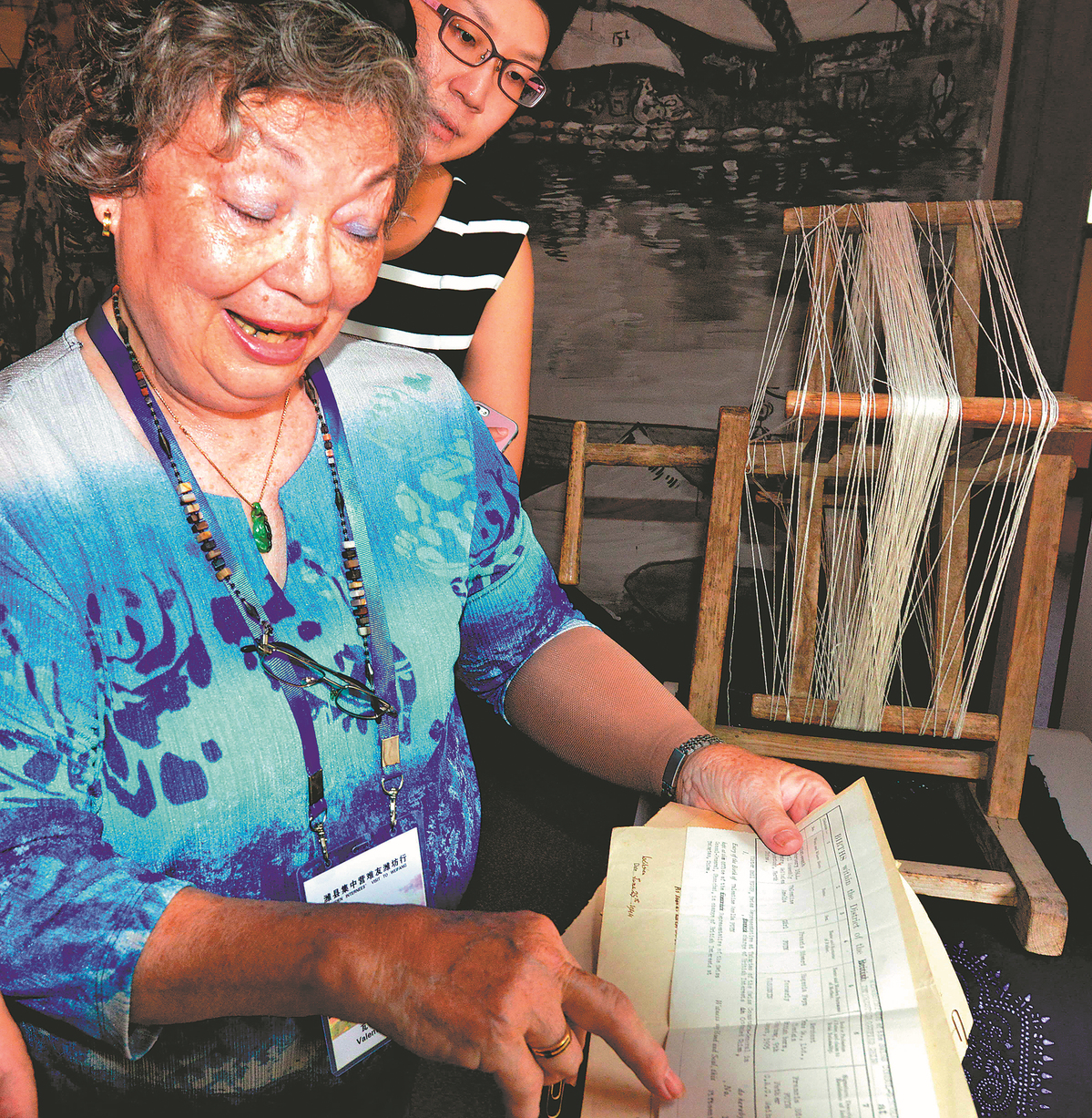
Help from local Chinese
Despite the wartime dangers, local Chinese villagers outside the camp risked their lives to secretly send critical intelligence to the internees, providing "very important information about the course of the war", according to Stanley.
In addition, they also helped form a "black market" that allowed people in the camp to trade some of their belongings for food, such as chicken meat and eggs, as the food supplies in the camp were quite limited.
"The black market was obviously dangerous," he said. "The Chinese people who helped make it work were in grave danger of being shot by the Japanese guards."
In 2020, Wang donated a piece of parachute cord to the internment camp museum given to him in 2015 by Cox Elliott, who was 2 years old when she left the camp
In 1944, some Western internees secretly planned an escape. Zhang Xingtai, who cleaned the latrines, and carpenter Liu Tengyun, were among the few non-Japanese allowed to enter and leave the camp. They helped convey messages to nearby Chinese anti-Japanese forces. With their assistance, Brit Laurance Tipton and the Hummel successfully escaped in June 1944.
ALSO READ: Historic Flying Tigers relics find new home in Guangzhou
On Aug 17, 1945, two days after Japan announced its surrender, the US military launched a rescue mission code-named "Operation Duck" and parachuted into Weihsien to liberate the internees.
Chinese translator Wang Chenghan, who is now 99, parachuted with the US soldiers during the rescue operation.
In 2020, Wang donated a piece of parachute cord to the internment camp museum given to him in 2015 by Cox Elliott, who was 2 years old when she left the camp. She said that her mother collected some sturdy parachute cords for packing their belongings as they prepared to leave Weihsien.
These cords were preserved by her family and were not given to Wang until Cox Elliott was 72 years old.
Stanley also recounted unforgettable stories his parents told him of heading to and leaving the camp.
In 1943, it was freezing cold when his family walked with their suitcases along Beijing streets heading to the railway station to get the train to the Weihsien camp. One man emerged from the crowd to give Stanley's father a thick jacket for warmth.
"This act of kindness from a stranger stuck in my father's memory many years later," he said.
Although Stanley was very young, he said he still remembers a group of Chinese boys about his age when he was in the camp. "They used to climb onto the camp wall where they would tease us and we would tease them back," he said.
At that time, the war had just ended and the electric fence was turned off. Stanley's family had remained in the camp waiting to be transported to Qingdao and board a ship to leave China.
"When we were finally driven out of the camp on army trucks, I saw the Chinese boys sitting by the camp wall watching us leave and looking very sad, as we were too, that we would never get the chance to play together," he said.
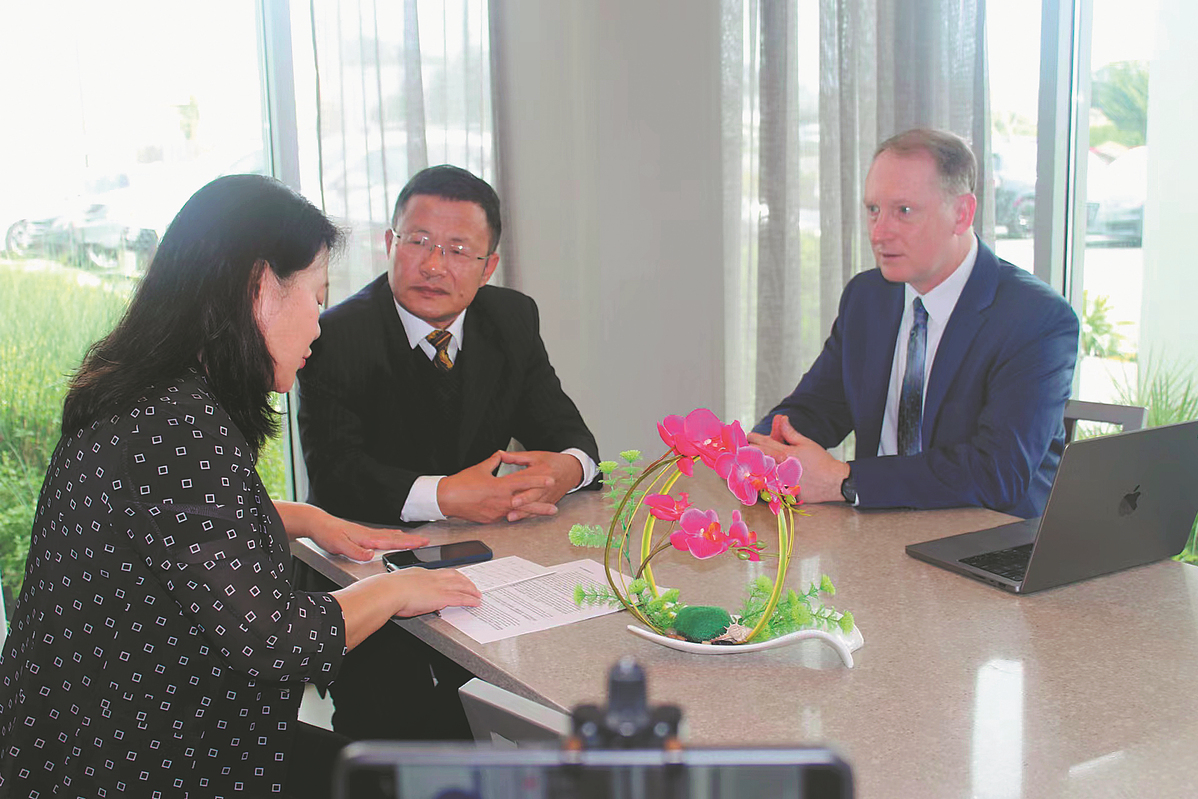
Returning to 'mother'
After the liberation of the Weihsien concentration camp, most of the former internees returned to their homelands.
However, over the following 80 years, many of them revisited Weifang multiple times, and expressed their special bond with China.
Mary Previte, who was imprisoned in the camp at the age of 9, later became a New Jersey state legislator in the US. When she returned to China in 2005, she knelt down and kissed the ground at Beijing Capital International Airport after her plane touched down.
Previte returned for the 60th anniversary of the camp's liberation. In her speech, she said, "China is our mother. I was born in Kaifeng, Henan. I knelt down and kissed my mother."
"Many of us, friends from around the world, were also born in China. Today, we are back home," she said.
Xia Baoshu, 93, the former hospital head, has received many former internees visiting the site in the past three to four decades, and has established enduring friendships and trust with many of them
Briton Maida Harris Campbell, 94, was imprisoned in the Weihsien camp between the ages of 13 and 15. She has returned to Weifang five times with her family.
ALSO READ: Shanghai's efforts to save Jews during WWII retold
"We would like to thank the Chinese that helped us," she said, adding she hoped the friendship of people from different countries would continue.
"I believe in promoting peace in any way I can," said Campbell, who now resides in Canada.
In 2015, on the 70th anniversary of the camp's liberation, 12 former internees and their descendants, totaling 80 people, gathered at the former camp site, where they left their handprints and their names in English and some even in Chinese.
Due to urban development, most of the site has been replaced by the largest hospital in Weifang.
Xia Baoshu, 93, the former hospital head, has received many former internees visiting the site in the past three to four decades, and has established enduring friendships and trust with many of them.
For decades, he has been dedicated to turning the oral histories of the internees into a book to let more people read about the site's history.
Xia said he and other surviving internees are all willing to record and share the unity and mutual support between the Western civilians and Chinese people.
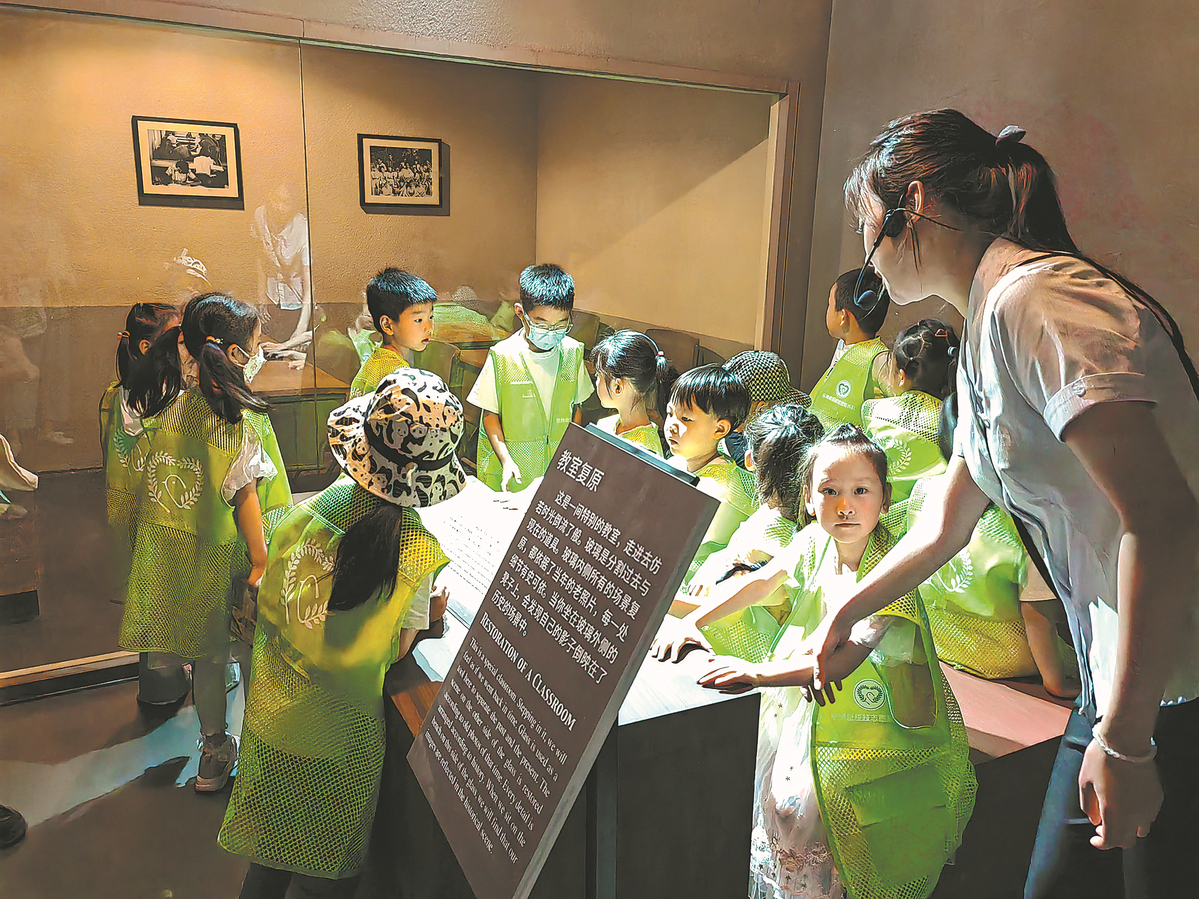
City of peace
In recognition of the unique wartime bond between over 2,000 Western expatriates and Weifang, and the city's efforts to promote peace through the transformation of the camp site into a museum, Weifang was designated as the world's 308th International City of Peace in 2021.
The honor was approved by International Cities of Peace, a global nonprofit association dedicated to promoting peace worldwide.
J. Frederick Arment, the organization's executive director, said at the time that Weifang had experienced historical hardship and trauma, yet the leaders and citizens of its communities are committed to healing and progress.
This gives me great hope that the memories of these friendly connections can help as a bridge in any present and future frictions that might arise in the current or future international situation.
Charles A. Stanley, An internee from the United States during WWII
Liu Yun, the Party chief of Weifang, said that the camp's history embodies the idea of peace and a humanitarian spirit.
"Weifang city needs to take responsibility and play a role in further promoting this idea and spirit from the perspectives of the country and the Chinese nation," he said.
As the former internees revisit the city multiple times, their memories and knowledge of China are being refreshed.
Stanley returned to China twice, in 1991 and 2019. He found that during his second visit, more Chinese people were aware of and interested in the camp's history and were much friendlier toward him.
"I think this illustrates the close bonds that exist between China and foreign families like mine, with long-standing links to friends among the Chinese people," he said.
READ MORE: HK rescue: The saga of CPC-led guerrilla force in WWII
"This gives me great hope that the memories of these friendly connections can help as a bridge in any present and future frictions that might arise in the current or future international situation," he said.
The experience in the camp had not only changed his life forever, but also that of his son, John, sparking his interest in China and playing a big role in him becoming a history professor at Kutztown University in Pennsylvania.
"It's very important to understand what happened in the Weihsien concentration camp. It is a lesson for those who did not experience it," John Stanley said.
"We need to study that history in depth to prevent such things from happening again."
Contact the writers at jiangchenglong@chinadaily.com.cn



